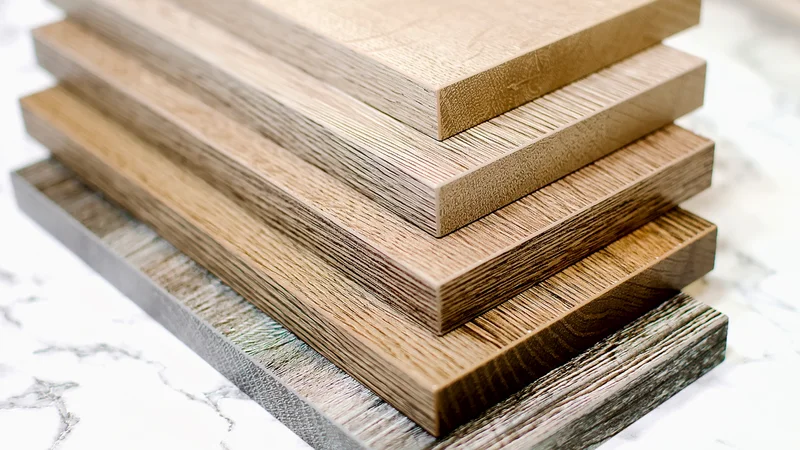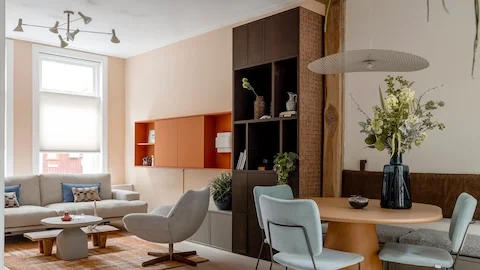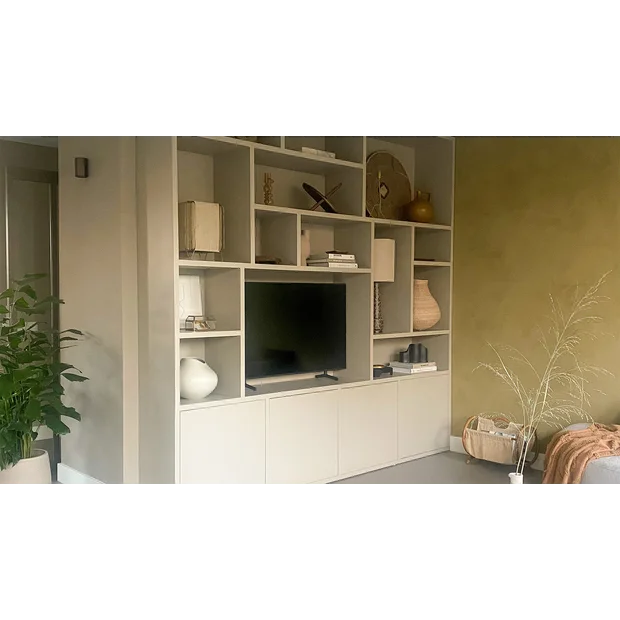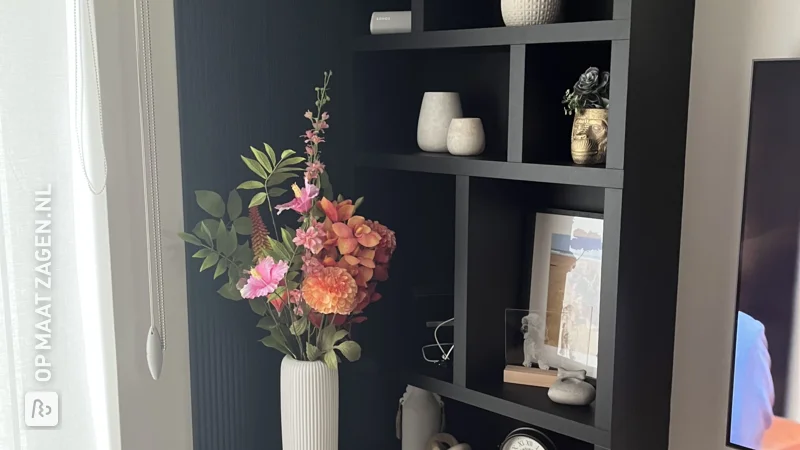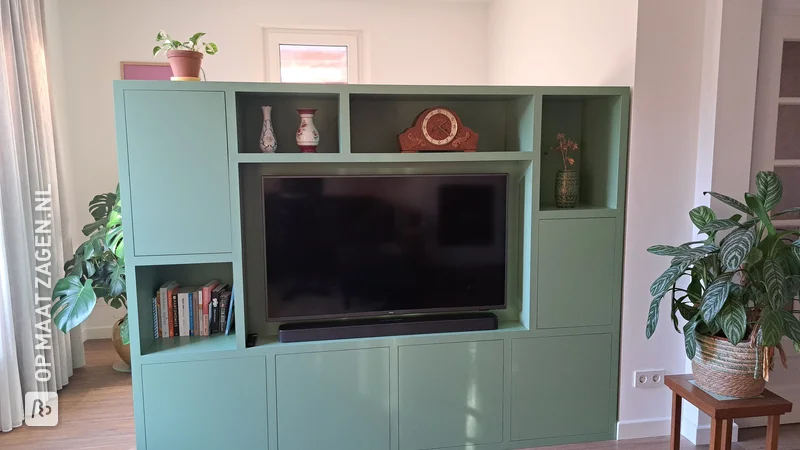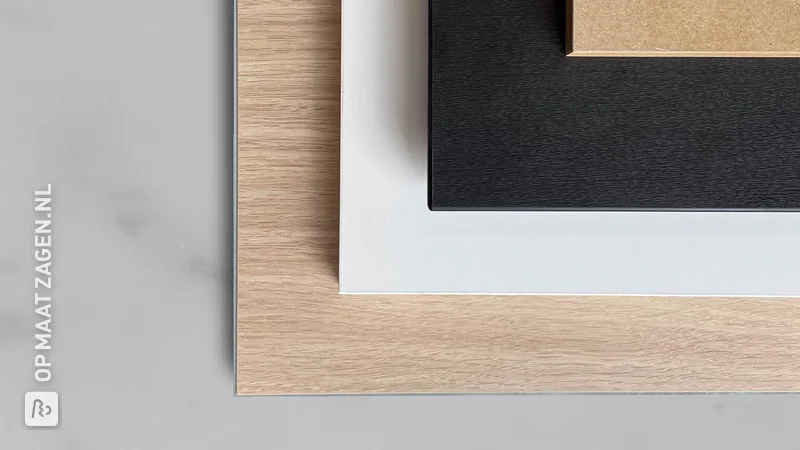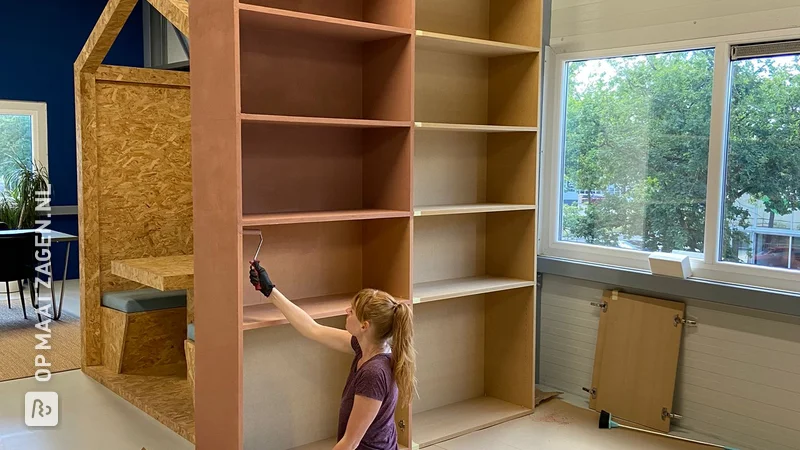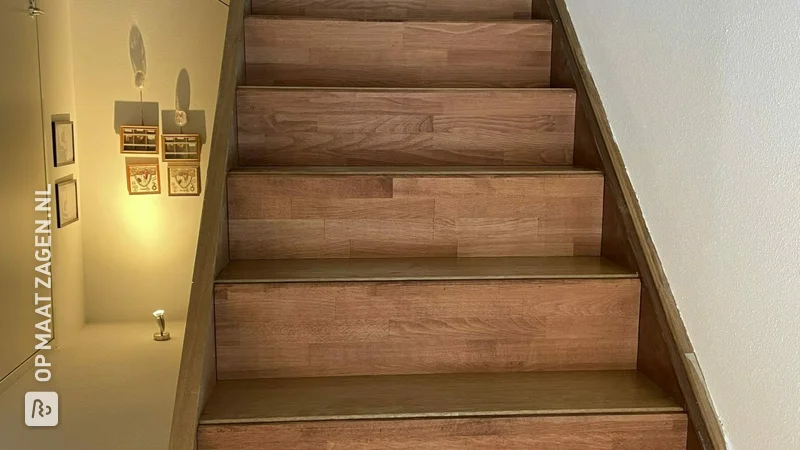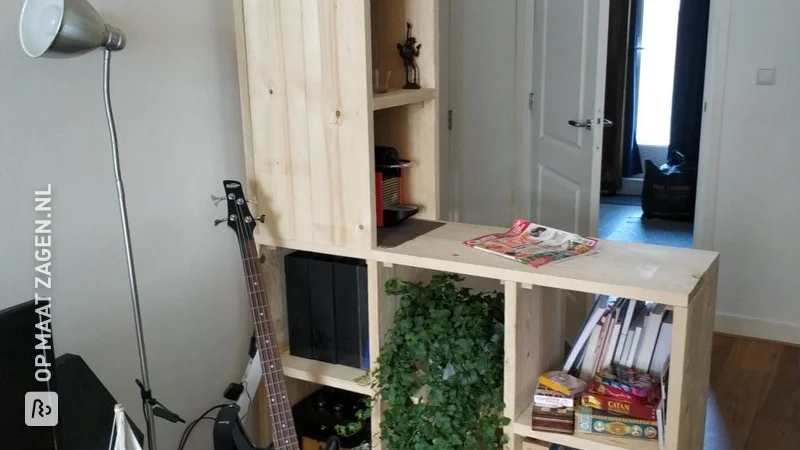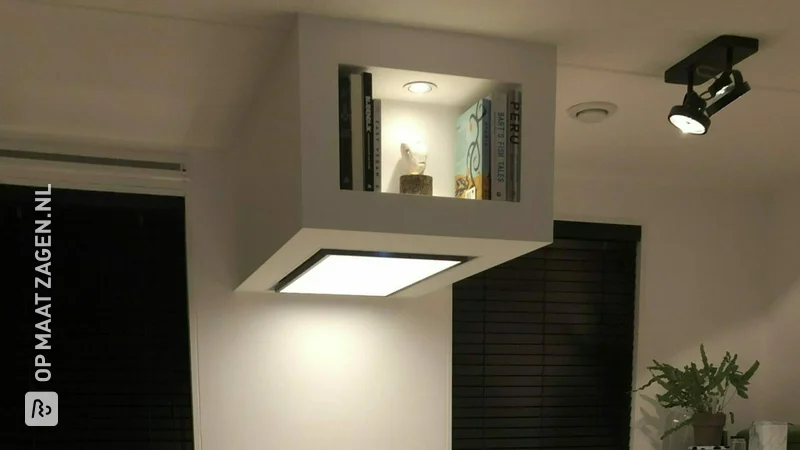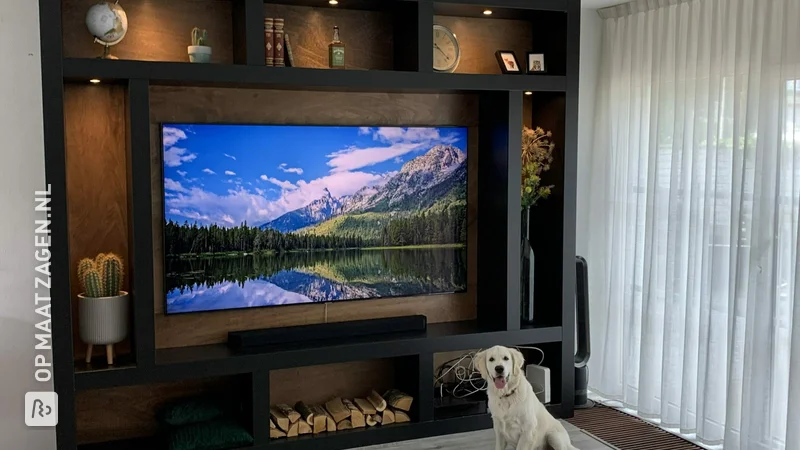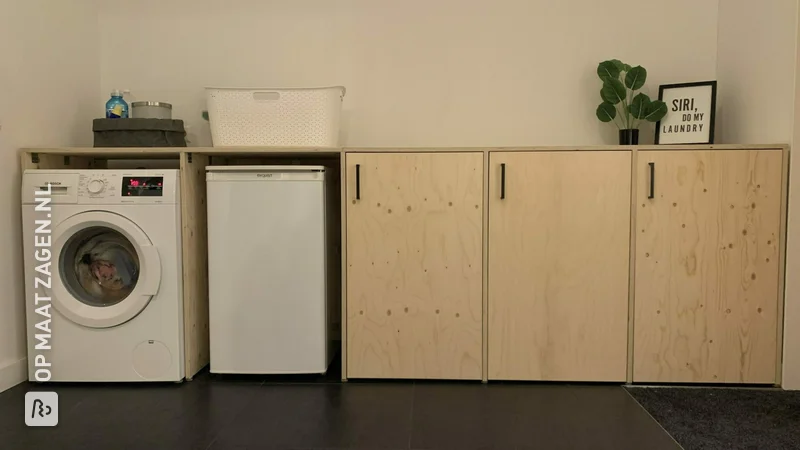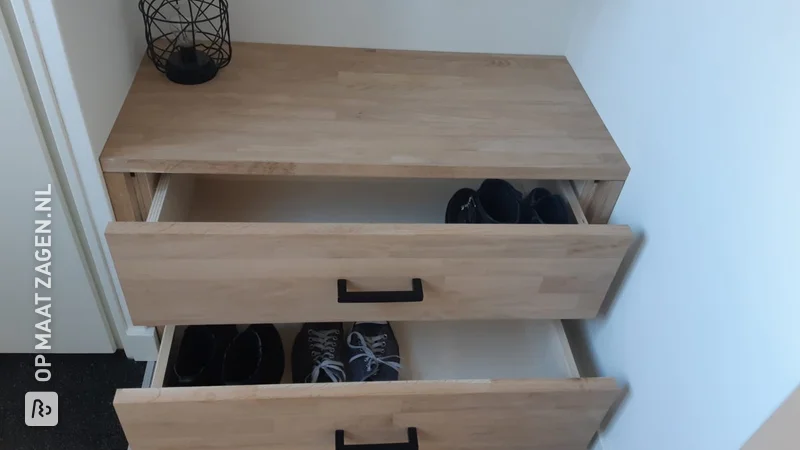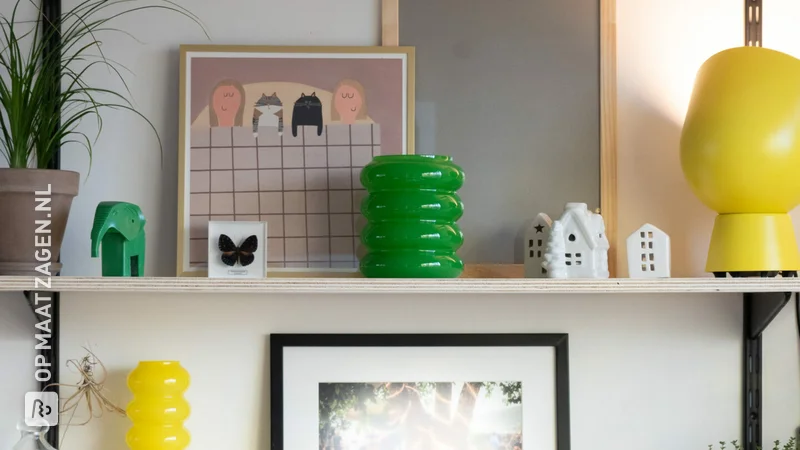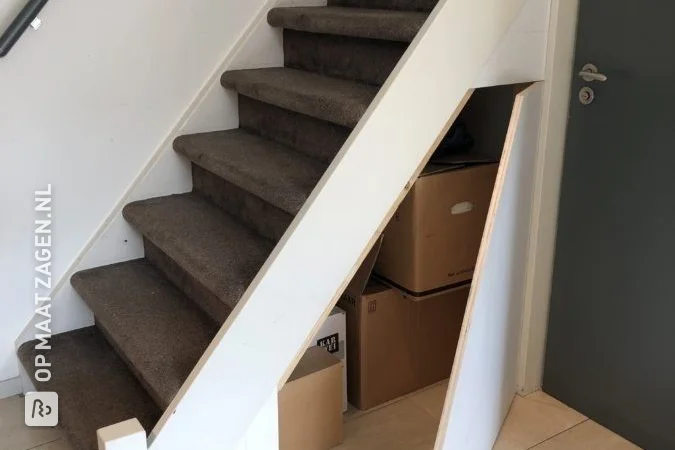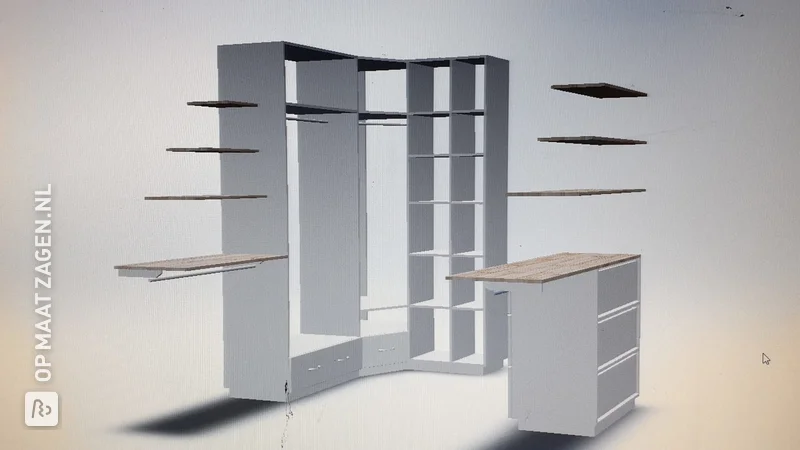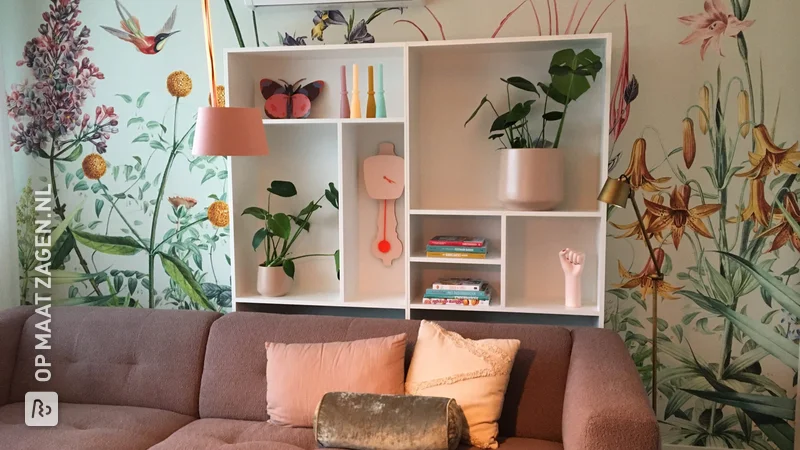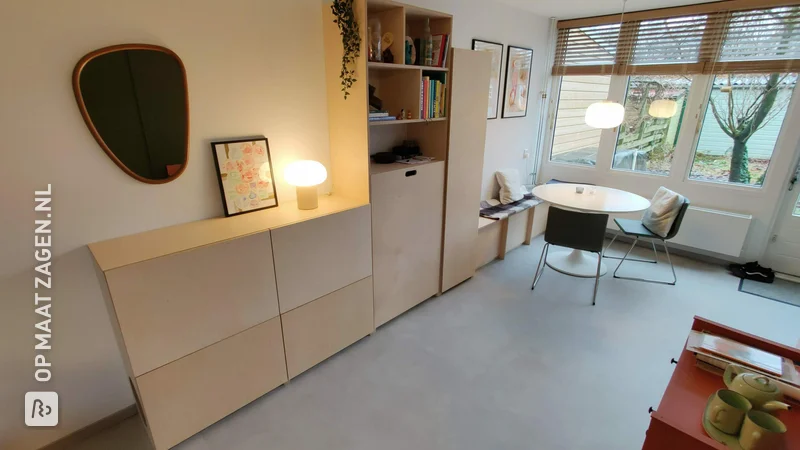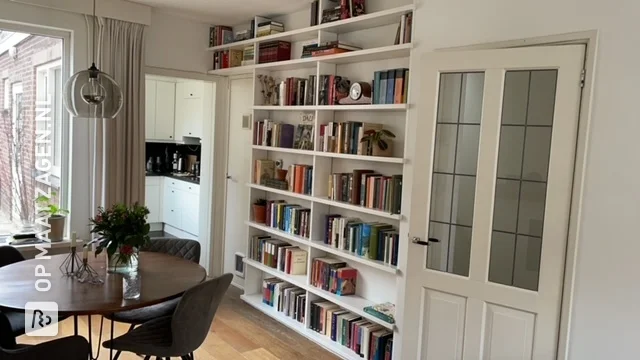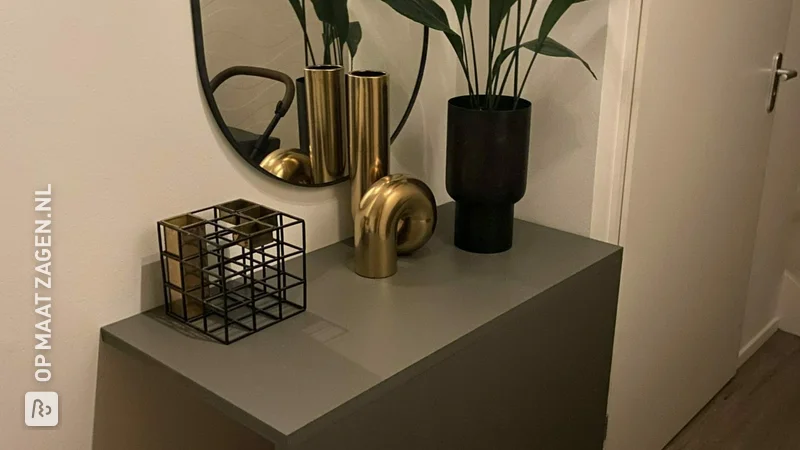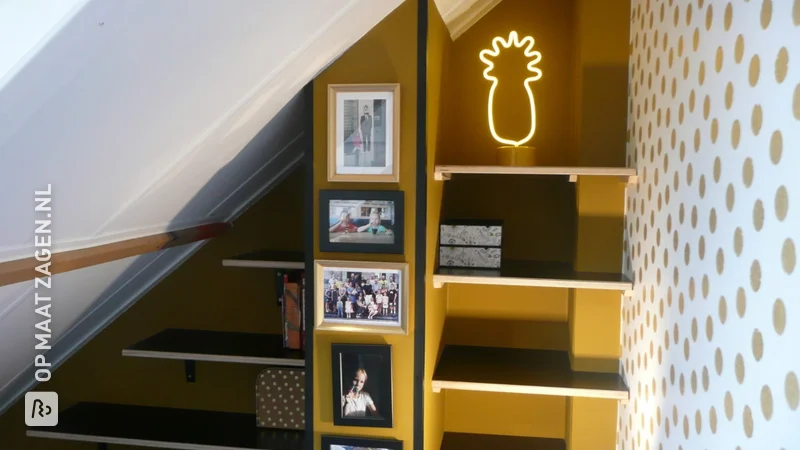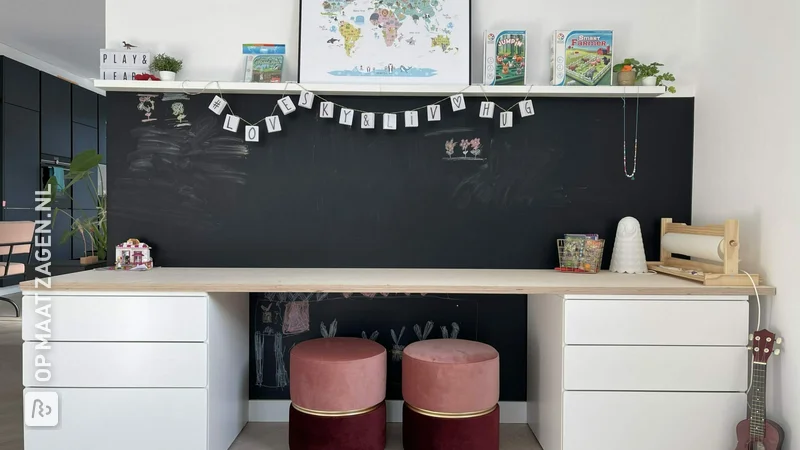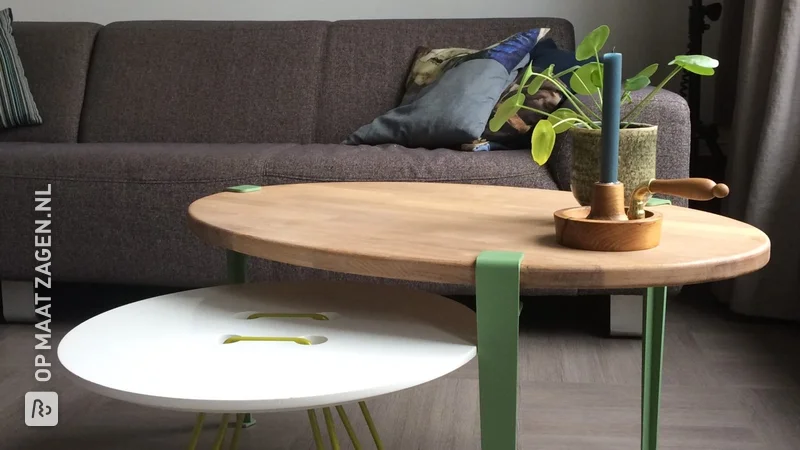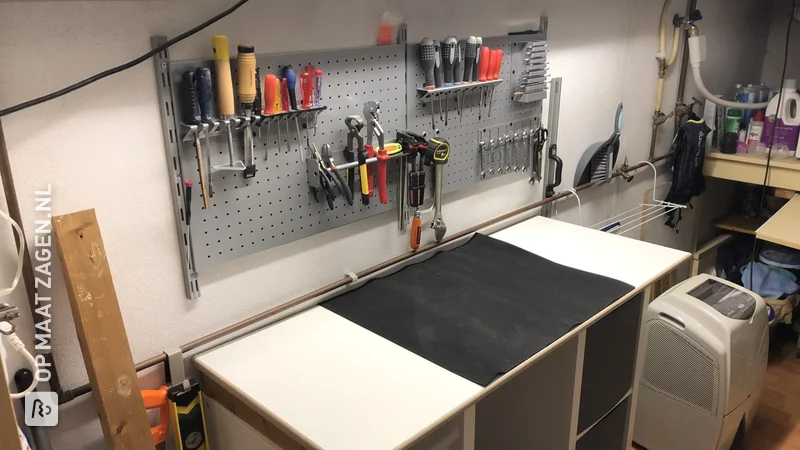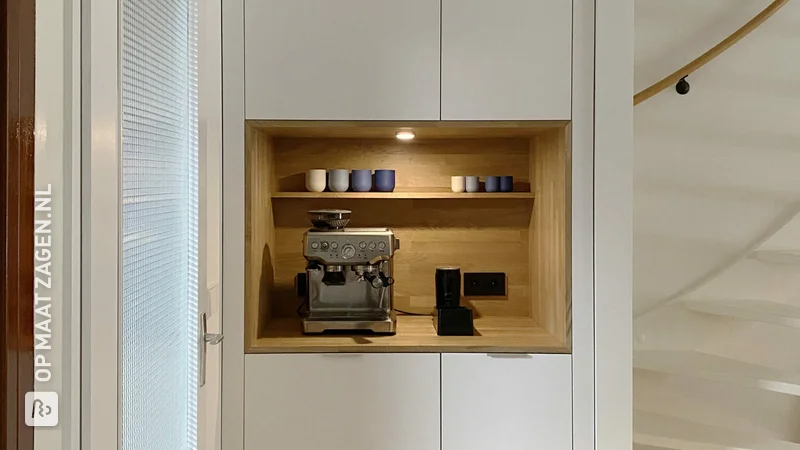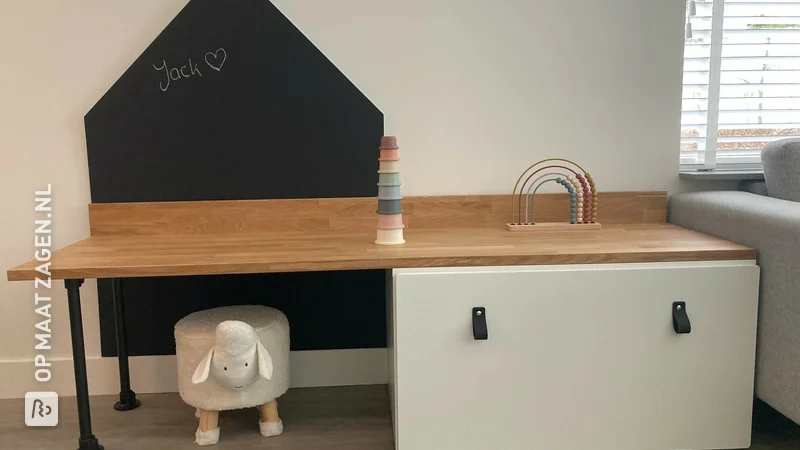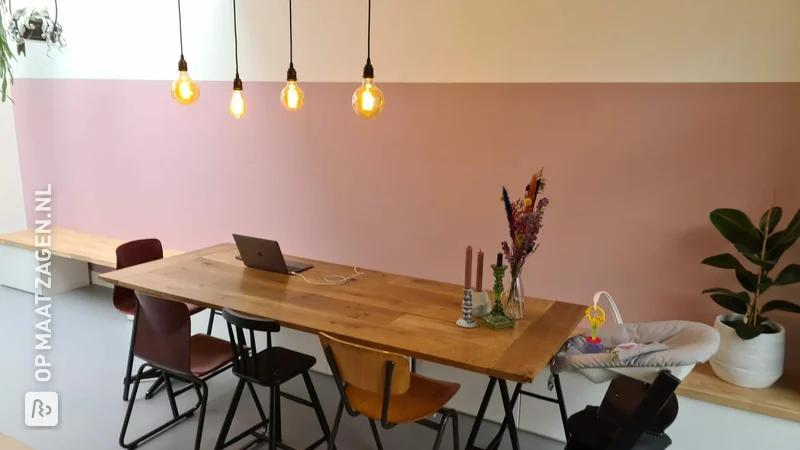- OPMAATZAGEN.nl
- DIY tips
DIY: Easily assemble a cube, column or display
DIY: Easily assemble a cube, column or display
A cube is a square in 3D shape, a classic shape that can be used as a side table or a pedestal in your interior. You can easily make a cube yourself with sawn-to-size sheet material. In this article you can read how to order a cube made to measure and how to assemble it easily yourself.
Do you already know what kind of cube you want? Then order your custom cube at OPMAATZAGEN.nl immediately! Choose the desired material and enter the correct dimensions.
Ordering a cube made to measure
Since a cube consists of equal sides, all the sides you order are equal in length. To order an almost seamless closed cube, configure 1 board of the desired size with 4 sides mitred. All items will then be delivered to your home cut to size. At home, all you have to do is glue them together. We only saw MDF in mitre. Please bear this in mind when ordering!
Order a tailor-made cube directly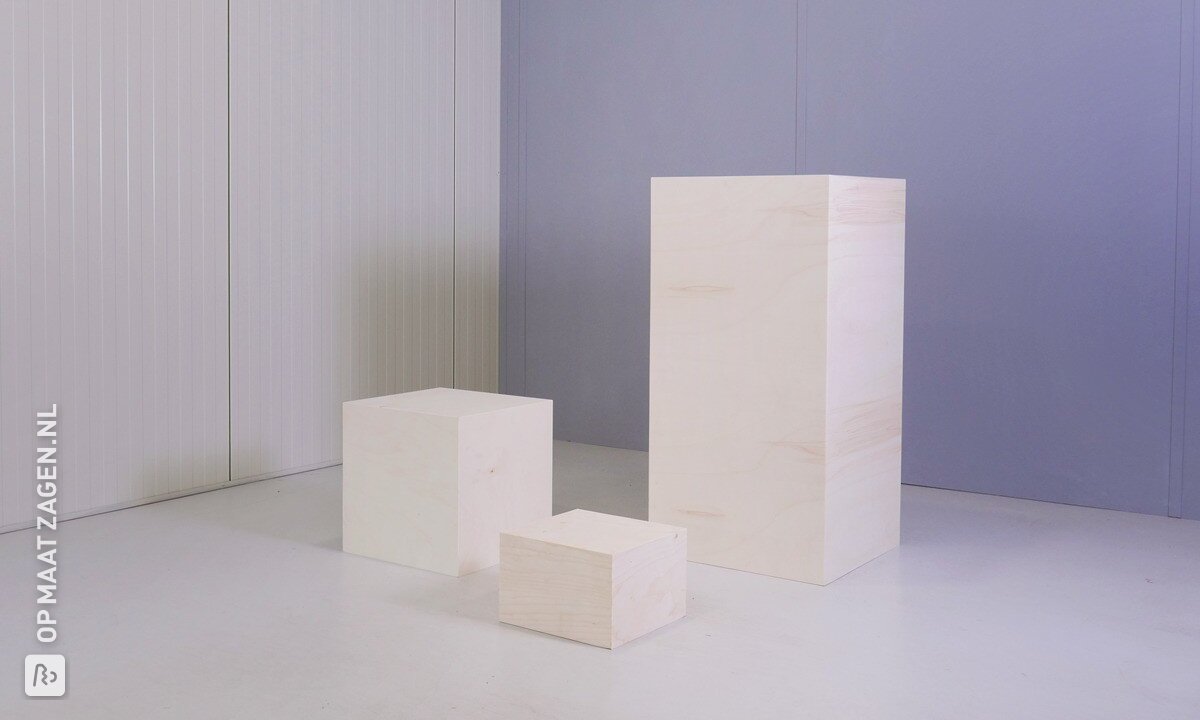
Simply order a customised display
If you order an MDF cube or column from us, we can cut the mitres for you. This gives you a neat and tidy result. We deliver all parts loose and with neatly sawn mitred edges on the right sides. All you have to do is glue the parts together!
Assembling a cube
To start with, it is important that you have wood glue and painter's tape.
Because all parts of a cube are mitred, you can easily glue the sides together.
- Place the four sides that you are going to glue together and make sure that the outside is facing upwards.
- Stick a piece of painter's tape along the entire length, exactly over the seam, and stick a few pieces of tape in the opposite direction as well for strength.
- Draai vervolgens de planken om, zodat de verlijmde onderdelen boven liggen.
- Now you can apply the glue and immediately press the sides together.
If necessary, you can use more tape to hold the parts in place while they dry.
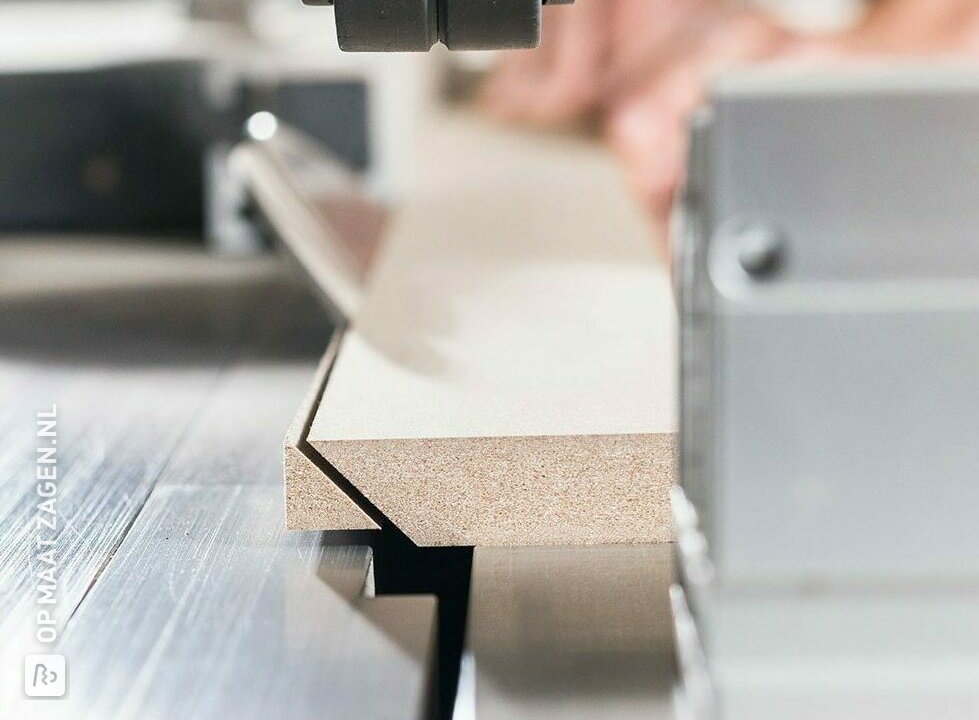
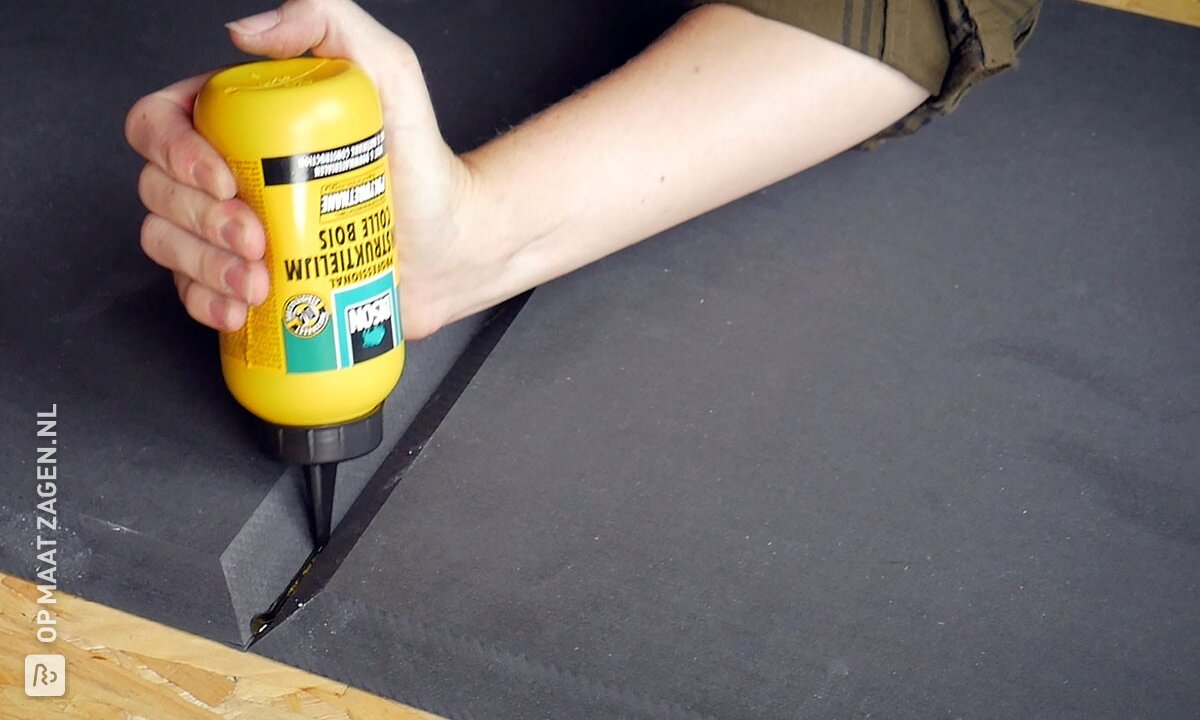
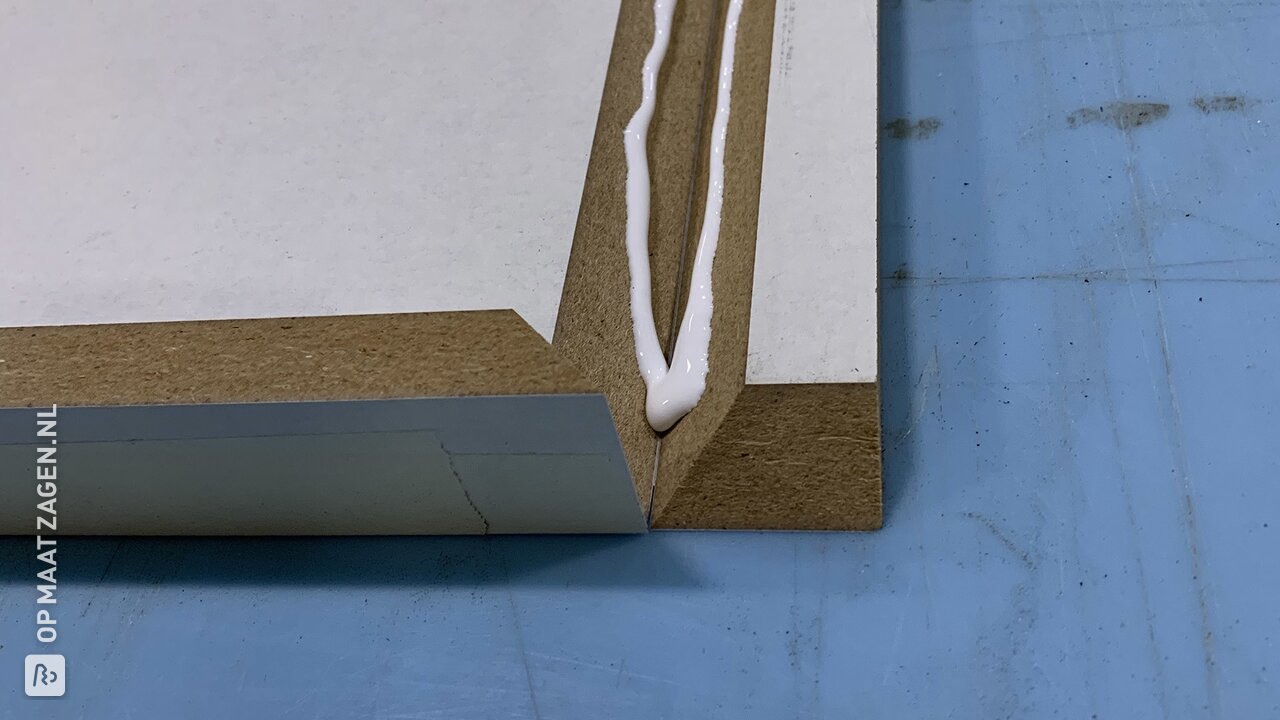
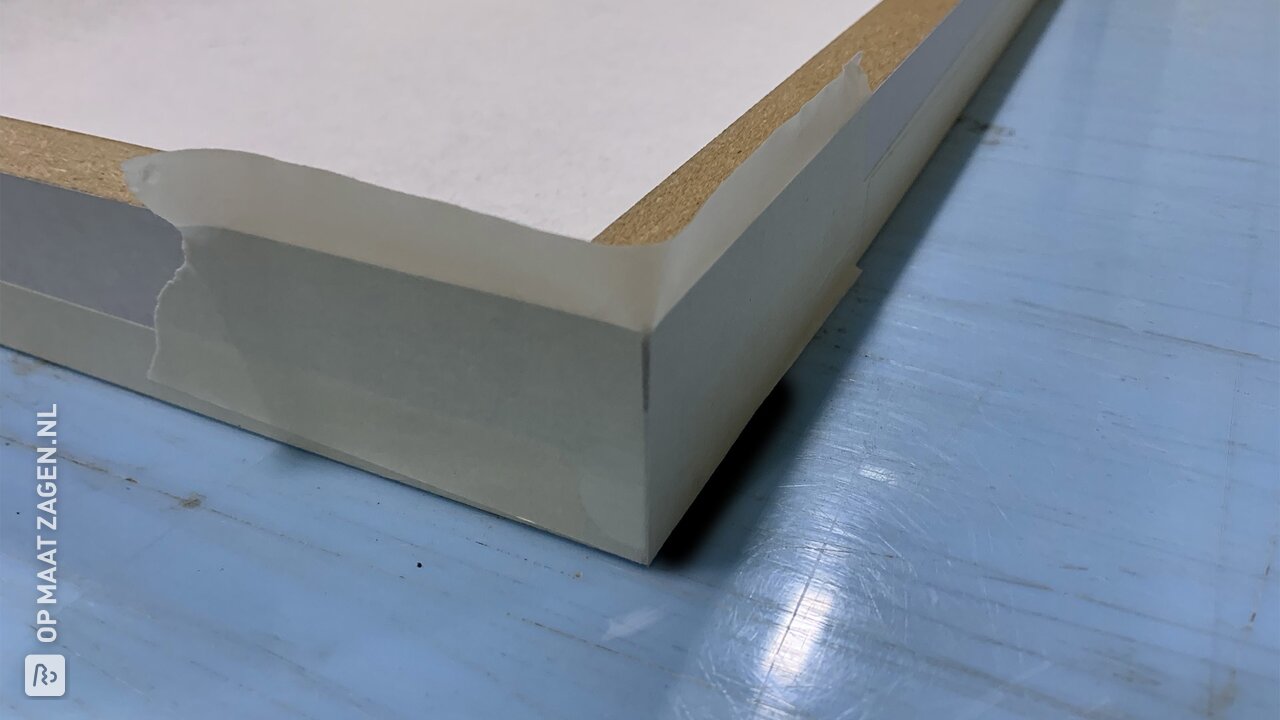
Assembling a column
A pillar works in a similar way, but here all the parts have a different size. First lay out all the parts before you start gluing them. The sides of the column are also cut to a mitre, which makes for a simple construction that is quick to assemble. For assembling, we recommend the same method as for assembling a cube.
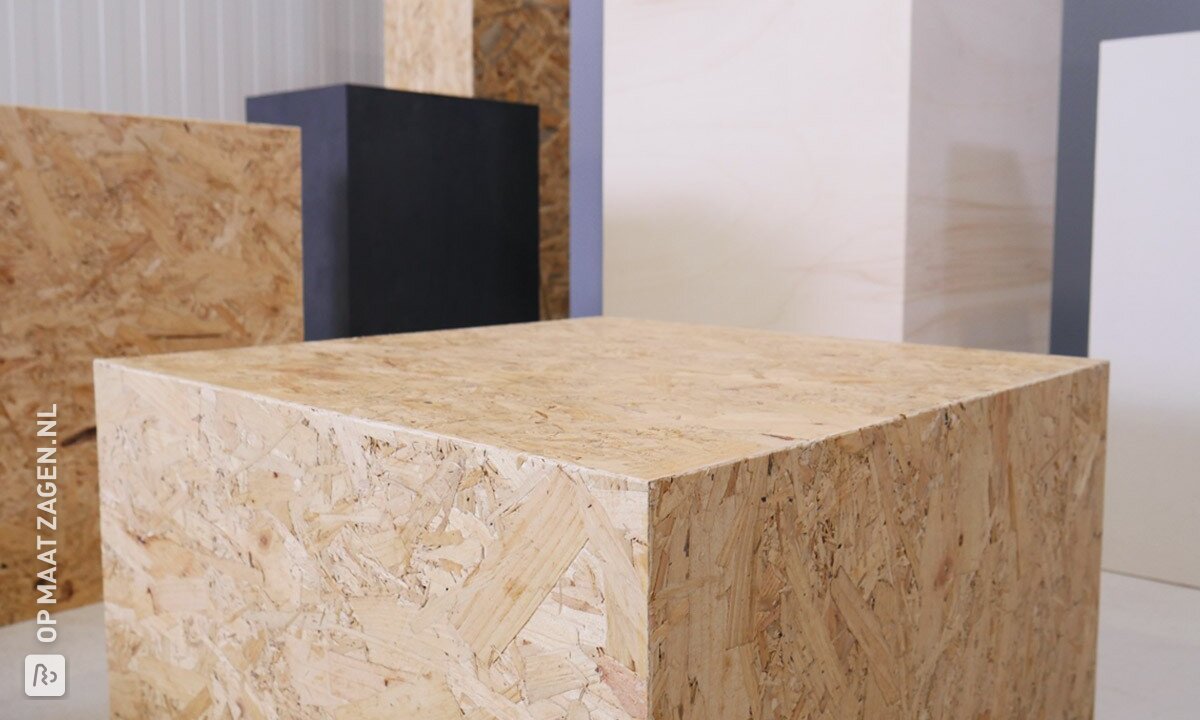
Which type of glue?
There is a lot of choice when it comes to adhesives. When should you use which type? First of all, there is wood glue. This is available in D2, D3 and D4. The number after the letter D indicates the extent to which the adhesive is moisture-resistant. D2 is not moisture-resistant and is therefore suitable for indoor use. D3 is moisture-resistant and can be used in the bathroom, for example. D4 is water resistant and can be used for both indoor and outdoor applications. In addition, the various types of adhesive are also available in a fast-drying or 'normal' variant. The fast-drying variant may seem attractive to use, but if there is a lot of gluing to be done, it also means that you have to work very quickly to prevent the glue from drying too quickly!
Another type of glue is construction adhesive. This adhesive is an effervescent glue, which has a filling capacity. For example, construction adhesive is very suitable for gluing mitre joints. The adhesive fills in any unevennesses, so that the joint dries completely tight. Construction adhesive is also available in a Tix variant. Tix stands for tixotrope and means that the substance is somewhat tougher than liquid adhesive. A substance which is tixotrope becomes more fluid when you shake it (for comparison: shaking ketchup). When gluing, it is useful to use a tix adhesive when working vertically.
Construction adhesive that comes out of the joint is easy to stab away with a chisel, once it has hardened. Just sand it down and the joint is completely tight! It is a good sign if the glue is forced out of the joint. This means that in any case enough glue has been used and there is enough pressure. Wood glue can be easily removed with a damp cloth.
High Tack is an adhesive with a somewhat thicker structure. This glue sticks directly to the material, so it is not necessary to clamp the material. The so-called initial tack is very high. High tack is suitable for bonding skirting boards, doorsteps or other parts that cannot be (properly) clamped.
View our product range
Would you like to order a column or display quickly and cheaply? View our full range via the button below.
